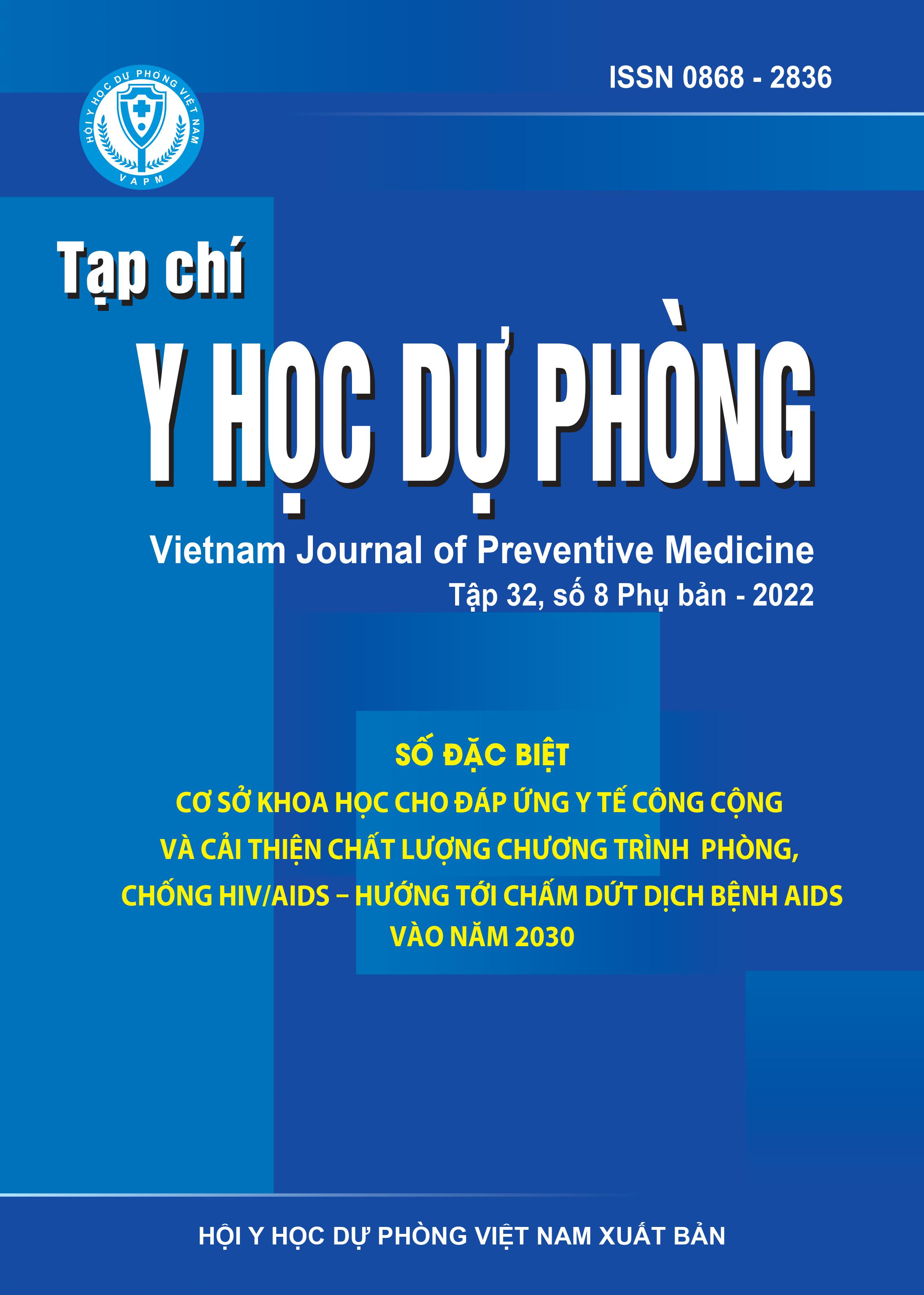Viral suppression among people living with HIV receiving ARV and Suboxone treatment in Hanoi
DOI:
https://doi.org/10.51403/0868-2836/2022/909Keywords:
HIV suppression, integration addiction treatment and HIV treatment, buprenorphine/naloxone treatmentAbstract
This article aimed to describe the HIV suppression rate and associated factors among patients receiving ARV and Suboxone (buprenorphine/naloxone) treatment in Ha Noi. A longitudinal study design was applied on 136 participants at 4 HIV outpatient clinics in Hanoi between 2016 and 2019. HIV viral load testing was performed at the Laboratory of National Hospital of Tropical Diseases. Mixed-effect model was used to identify factors related to HIV viral load suppression. The results shown that 96.3% of participants were male with mean age 38.8 ± 5.8 years, 43% were employed, 53.7% used heroin over 10 years and mean CD4 count was 411 ± 216 TB/mm3. The viral load suppression rates at 6 and 12 months of followup were 81.8%. Findings from the mixedeffect model analysis shown that patients with CD4 levels ≥ 500 cells/mm3 were more likely to achieve HIV viral load suppression < 200 copies/mL than patients with CD4 levels < 500 cells /mm3 (OR = 0.24; 95% CI: 0.09 – 0.64). There was an improvement in viral load suppression (< 200 copies/mL) at 12-month follow-up. It is necessary to strengthen psychobehavioral interventions to enhance adherence to achieve optimal treatment effectiveness.
Downloads
Downloads
Published
How to Cite
Issue
Section
License
Publication License No 150/GP-BTTTT signed on May 8, 2014;
Electronic Publication License No 322/GP-BTTTT signed on June 15, 2016.


